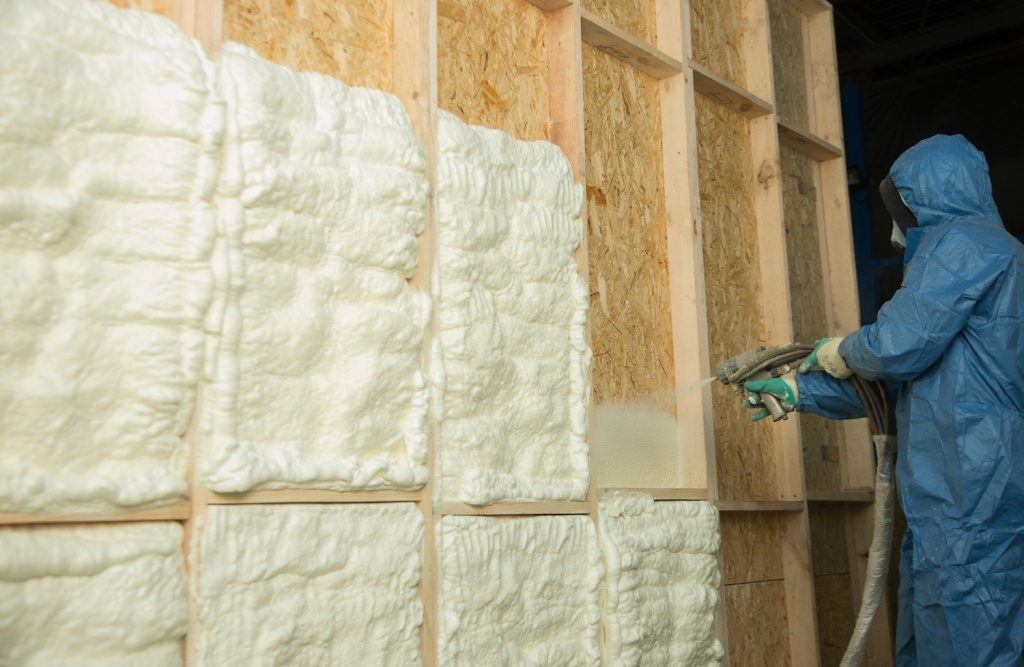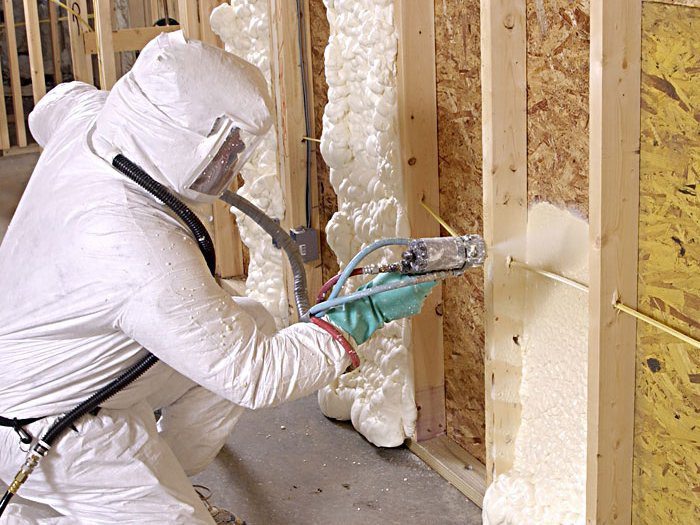Spray Foam: The Ultimate Remedy for Air Sealing and Insulation
Spray foam insulation has actually arised as a leading remedy for reliable air sealing and thermal insulation, providing an one-of-a-kind combination of properties that set it apart from typical techniques. Comprehending the full scope of its benefits, installation procedures, and contrasts with various other insulation kinds is important for making informed choices.
What Is Spray Foam?
Spray foam is a flexible insulation product that incorporates the concepts of air securing and thermal resistance to enhance energy effectiveness in buildings. Made up mostly of polyurethane or various other comparable substances, spray foam is used as a liquid that expands upon contact with surfaces, developing a solid, continual layer of insulation. This unique home permits it to load gaps, splits, and spaces that standard insulation materials may forget, providing an exceptional air seal.
There are 2 major sorts of spray foam: open-cell and closed-cell. Open-cell spray foam is lighter and extra versatile, using superb noise absorption and a lower R-value per inch - Spray Foam. On the other hand, closed-cell spray foam is denser, providing a greater R-value, dampness resistance, and included structural honesty to constructing elements
The application procedure generally involves specific equipment, guaranteeing a seamless application that adheres to numerous substrates, consisting of metal, concrete, and wood. This flexibility makes spray foam appropriate for both new constructions and retrofitting existing frameworks. Its capacity to develop a closed obstacle dramatically adds to minimizing energy consumption and improving indoor air high quality, thus making it a preferred choice amongst building contractors and home owners alike.
Benefits of Spray Foam Insulation
Among the most substantial advantages of spray foam insulation is its extraordinary capability to develop a continual air obstacle, which efficiently minimizes power loss. Unlike conventional insulation materials, spray foam expands to fill voids and cracks, making certain that air leak is dramatically lowered. This characteristic not just enhances energy efficiency but likewise brings about decrease utility costs gradually.
Additionally, spray foam insulation supplies superior thermal resistance, adding to an extra stable indoor atmosphere. Its high R-value per inch permits effective insulation in constrained areas, making it optimal for attics, walls, and crawl areas. Moreover, the moisture-resistant residential or commercial properties of spray foam aid stop mold and mold growth, advertising healthier living problems.
An additional critical advantage of spray foam insulation is its sound-dampening top qualities (Spray Foam). It properly minimizes sound transmission between rooms, creating a quieter and extra comfy home atmosphere. The longevity of spray foam likewise sticks out, as it does not sag or settle with time, preserving its performance throughout its life expectancy
Just How Spray Foam Functions
Comprehending how spray foam insulation functions is essential for valuing its effectiveness in air securing and thermal resistance. Spray foam insulation contains two primary components: isocyanate and polyol material. When these parts are blended, they undertake a chain reaction that triggers the material to increase quickly, creating a dense foam that loads cracks, cavities, and voids.
As the foam increases, it abides by surface areas, creating a closed seal that substantially decreases air infiltration. This particular makes spray foam insulation very efficient at preventing drafts and dampness infiltration, which can cause energy loss and damage over time. Additionally, the closed-cell version of spray foam offers remarkable thermal resistance due to its rigid structure, effectively lessening heat transfer.
The special residential properties of spray foam allow it to adapt uneven surfaces, guaranteeing comprehensive insurance coverage and a seamless barrier. Consequently, spray foam insulation not only boosts energy efficiency however additionally adds to improved indoor air top quality by minimizing the buildup of contaminants and irritants. Eventually, understanding the auto mechanics behind spray foam highlights its function as a remarkable option for insulation and air securing in both residential and industrial applications.
Installment Refine Introduction

Prior to installation, the room has to be adequately cleaned and prepped, guaranteeing that surface areas are devoid of dirt, wetness, and debris. Due to the fact that contaminants can endanger bond and total efficiency, this step is critical. Once the location is prepared, the application includes blending both parts of the spray foam, which increases upon contact and loads voids properly.
Trained specialists need to carry out the setup, using specific equipment to ensure consistent insurance coverage and optimal density. Safety and security preventative measures, including putting on safety equipment and making sure proper air flow, are imperative during this procedure. After application, the foam normally cures quickly, creating a strong obstacle that enhances power efficiency.
Contrasting Spray Foam to Traditional Insulation
When assessing insulation choices, spray foam insulation stands out in comparison to standard materials such as fiberglass and cellulose. One of the main benefits of spray basics foam is its superior air securing capacities. Unlike fiberglass and cellulose, which can enable air infiltration, spray foam expands upon application, filling holes and voids to develop an airtight seal. This causes enhanced power performance, as much less heated or cooled air escapes the home, causing lower utility expenses.
Additionally, spray foam gives a higher R-value per inch than typical insulation kinds, using even more efficient thermal resistance go right here in a thinner account. This characteristic is especially valuable in rooms with restricted dental caries depth. Additionally, spray foam is resistant to wetness and mold and mildew development, which can be a considerable interest in cellulose and fiberglass, especially in humid environments.
Nevertheless, spray foam insulation normally carries a greater ahead of time cost than its traditional equivalents. Property owners should weigh this preliminary financial investment against long-lasting energy financial savings and performance benefits. Ultimately, while both insulation kinds serve their function, spray foam becomes an advanced remedy for modern-day insulation needs, specifically in regards to air securing and thermal performance.

Final Thought
In recap, spray foam insulation stands for an extremely effective service for achieving ideal air sealing and thermal resistance. Its distinct homes, including wetness resistance and noise dampening, make it ideal for different applications in both new building and constructions and retrofitting jobs (Spray Foam). Although the first costs might be greater contrasted to typical insulation products, the lasting advantages, such as substantial power financial savings and boosted indoor air top quality, validate the investment and underscore its value in modern-day structure techniques.
Spray foam insulation has emerged as a leading service for effective air securing and thermal insulation, supplying a distinct mix of residential or commercial properties that set it apart from typical techniques.Spray foam is a versatile insulation material that integrates the concepts of air sealing and thermal resistance to boost power effectiveness in buildings.When evaluating insulation options, spray foam insulation stands out in contrast to typical products such as fiberglass and cellulose. Ultimately, while both insulation kinds serve their purpose, spray foam emerges as an extra innovative service for modern insulation demands, specifically in terms of air securing and thermal performance.
In summary, spray read this foam insulation stands for a highly efficient remedy for achieving optimum air sealing and thermal resistance.